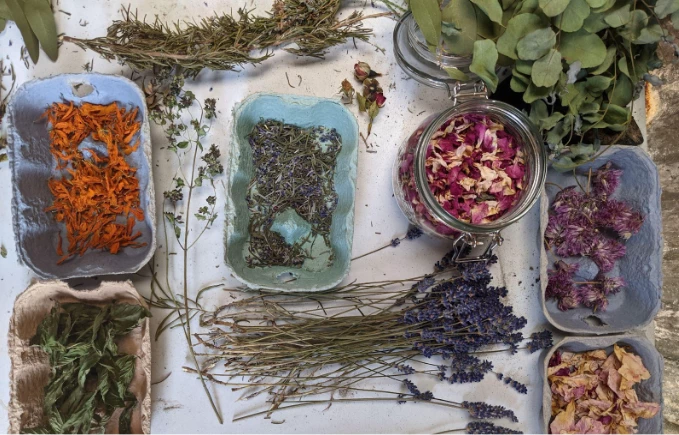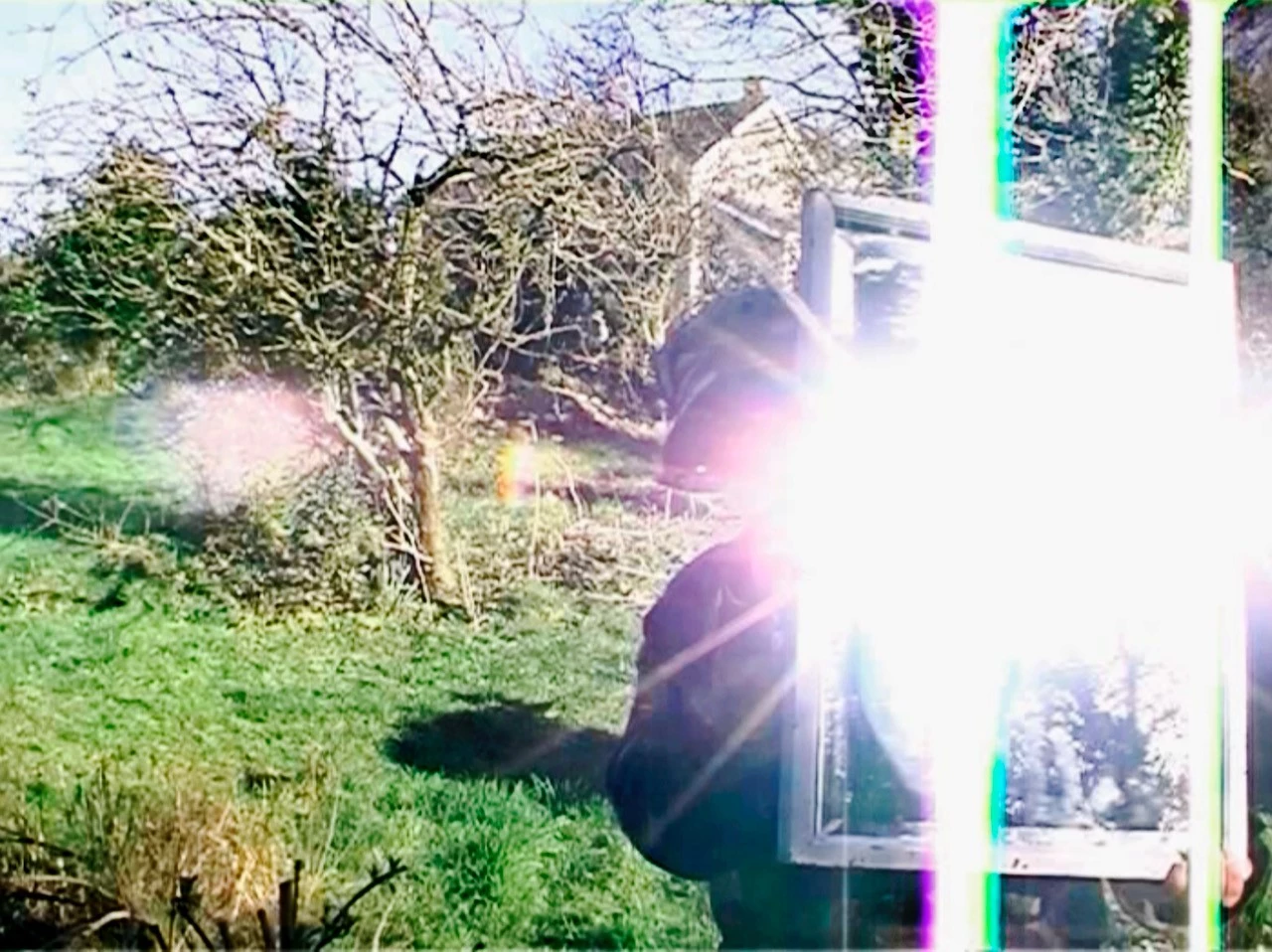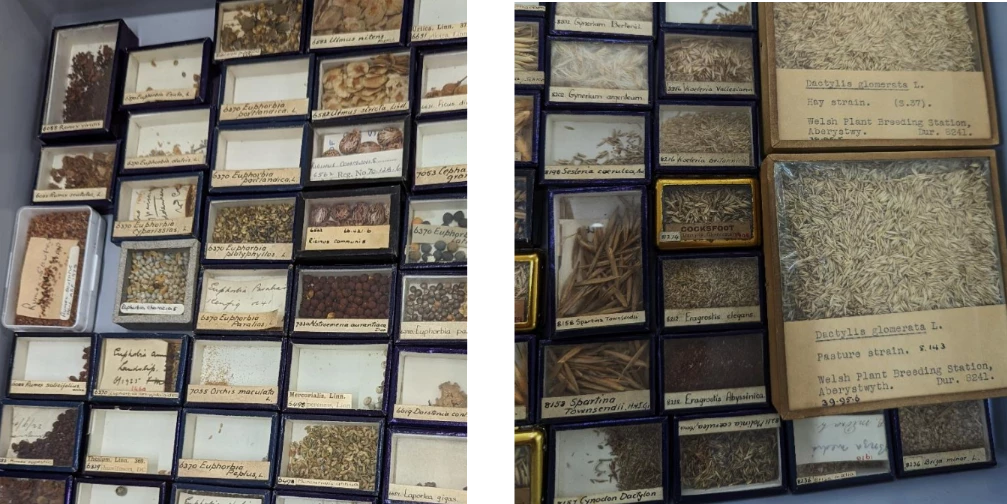If you think about it, cutting flowers from their mother plants just to watch them die on your mantelpiece is a very strange practice indeed, wasteful even. But it’s something that humans have done for thousands of years. Bringing the beauty of the outside inside. Communicating congratulations, condolences, declarations of love, cleansing sick air and casting spells. Flowers inspire us as individuals through the design of our clothing, jewellery, tattoos and home interiors. They influence art, poetry and music and the scents that we surround ourselves in; plants and flowers have arguably served as the template for how we as humans understand and model beauty. But flowers can communicate so much more than just beauty, they can reflect the attitudes and aspirations of a person or society, covertly sending messages about who we are and what we value most.
A simple vase of Flowers?
A Vase of Flowers attributed to the Flemish artist Simon Hardimé (1672–1737) from the Amgueddfa Cymru collection is an example of how a vase of cut flowers can be used to discuss not just beauty but Empire, Wealth, life, death and most interestingly, shows how even in the 17th century images were manipulated to communicate an unnatural view of nature.
Today, flowers such as tulips, featured here in the painting, are fairly common and inexpensive; however, in the 18th-century Netherlands, tulip plants rivalled gold and precious stones in their value, making them a symbol of high status. Tulips were brought from Asia and were treasured for their rarity and exceptional beauty. The feeling of grandeur and status in the painting is further displayed by the exaggerated size of some of the flowers and the fact that many of them would not have been in bloom at the same time of year, making this painting fictional, even propaganda, ensuring this work became more than just a statement about wealth. The painting displays the geographical reach of the Dutch empire, the skill of Dutch diplomacy, the dominance of Dutch botany, as well as celebrating engineering, exploration and commerce. In short, the message is that the might of the Dutch empire can produce a vase of flowers more progressive and impressive than Mother Nature herself.
Paintings however, can outlive their era and the messages they were meant to communicate at a certain point in time. Without context, a painting’s meaning can begin to evolve and almost assume a whole new identity depending on who is looking at it and when. In the Victorian era, the Language of Flowers became popular, allowing flowers to communicate a secret message with every bloom. Using this language, our painting above could convey: Love through roses, Charity through tulips, Sincerity through hyacinths and Rebirth through daffodils. So, if someone you sincerely love is starting a new job in a charity shop, you know which flowers to give them.
It is easy to forget that flowers have more uses than just looking pretty. Plants have been used in cooking, medicines, cosmetics, perfumes and poisons for thousands of years, and continue to be used today. Roses, for example, have antibacterial properties and the hips (the bud of seeds that appears after the petals fall off) contain more Vitamin C than oranges. Daffodils are poisonous to eat, yet they carry properties that are being used to research treatments for Alzheimer’s and Cancer. So, for some, a daffodil isn’t just a symbol for St David or springtime, but instead represents a healthier, longer life with the ones they love. Even tulips, that have very little use apart from their looks, are in fact edible, and were eaten during the Second World War when food was scarce.
For me though, I view the painting through the eyes of an amateur gardener. I imagine someone tending them as seedlings, watering them morning and evening, defending them from slugs and greenflies, and finally triumphing in their beauty when they eventually bloom. That process is the same for me today as it was back then. A process that became incredibly important for me during the COVID lockdowns of the last two years. Growing things forced me to slow down, to be patient, and in doing so, reconnect with nature. For me now, a flower isn't just a flower. Caring for flowers supports my mental health and brings colour and joy into my home on even the gloomiest days. But more importantly, flowers support whole ecosystems and deserve our utmost respect and consideration. Like most people, I have a strong sentimental connection with flowers; through gardening I can create a whole space full of memories distinct to me. Orange lilies and purple hyacinths for my grandmothers. Hydrangeas from my wedding bouquet. Blue thistles that pricked my fingers making them bleed as I arranged my father’s funeral flowers. Flowers have a way of reminding us of our past, the good and the bad, tying us to the milestones of life. No other flower features more in our lives than the rose. Weddings, Valentines, Mother's Days are often celebrated with roses, but as someone who grows roses, I have often wondered how they are produced so cheaply and in such numbers.
The reputation of a Rose – what is more British than a rose?
It could be argued that modern consumer expectations are not so dissimilar from those who viewed this painting 300 years ago. We live in a consumerist, aspirational society that has up until now embraced cheap imports and fast fashions. This includes cut flowers, with some species holding more value and status than others. Roses, depending on the variety, are arguably the highest value flower and therefore most popular for cut arrangements. As the nation’s favourite flower, roses represent love, prosperity and have a strong association with ‘Britishness’. However, the majority of rose varieties originate in Asia, and roses used for floristry today, including those bought in supermarkets, etc., are grown abroad, then imported to the UK.
A 2020 government report estimated the ornamental plant industry in the UK alone was worth £1.4 billion, a number that is expected to increase significantly in the next few years. According to a study published by Lancaster University in 2018, only around 10% of those plants and flowers are homegrown, with the majority entering the country from (or through) the Netherlands and Kenya. At present, the UK cannot produce enough flowers to meet its own demand, but the last few years have uncovered the environmental and human costs of mass flower production and transport.
In short, producing a flower of acceptable size, quality, freshness and price requires most, if not all of the following elements:
- Heat – be it from distant climates near the equator or heated greenhouses. A consistent environment is important to create the best yield.
- Cold – Refrigerated containers to transport the flowers just like we do with food.
- Pesticides and fertilisers – these are at a much lower standard than those used on Food plants
- Transport – Plants require vehicles and planes to move them as quickly as possible to retain top prices.
- Human cost – Working conditions and pay vary widely from country to country.
- From market to market – Flowers are rarely sold directly from producer to consumer so the flowers are likely to make several stops before reaching the point of sale.
This means, if you were to buy a similar bouquet to the one in the painting above, the flowers would have each travelled hundreds if not thousands of miles from multiple countries using a variety of production methods. An article by Flowers from the farm breaks down the Carbon footprint of comparable Dutch, Kenyan and UK bouquets concluding that a locally grown and sold bouquet of outdoor UK grown flowers uses around 90% less CO2 than that of comparable bouquets from Kenyan or Dutch origin. However, the UK demand for cut flowers is greater than its capacity to produce them so we have no choice but to import, so…
How can we as consumers make more sustainable choices?
- Shop locally and support small businesses. Visit your local florist for unique designs, expert knowledge and top quality varieties of flowers you won’t find in the shops. Alternatively, find your local pick-your-own-flower farm where you get a fun day out as well as a bunch of farm fresh blooms.
- Shop seasonally – Buying seasonally reduces the likelihood of plants being forced to bloom through artificial intervention. So, instead of imported CO2-guzzling roses on Valentine’s day, try more locally grown daffodils or tulips. Equally as beautiful and much kinder to the environment and your bank account.
- Supermarket flowers – read the label. Try and buy British where possible, but if it’s not possible keep an eye out for the Free Trade or FSF stickers, which offer more sustainable choices, and always go organic when possible.
- Online florists – do your research. If you have to buy online make sure you check the website’s sustainability policies. For example Bloom and Wild use 100% recyclable packaging and are carbon-neutral.
- Try a potted plant instead. Choosing a potted plant can both be cheaper and more prolific; for example, some roses produce countless flowers for 50 years or more.
Changing our attitudes to how we consume flowers may seem unimportant to our planet on the surface because what is more natural than a flower? Yet, flowers can have a huge environmental and human impact. We as consumers have the responsibility to support ethical and sustainable farming practices while also adjusting our expectations to better fit the rhythms of nature. Just as Hardimé’s (attributed) Vase of Flowers communicates something of attitudes of his society, we have a choice today on what the bouquet on our windowsill says about us. Yes, flowers are fleeting, but so is life and it is our responsibility to make the best of it.



